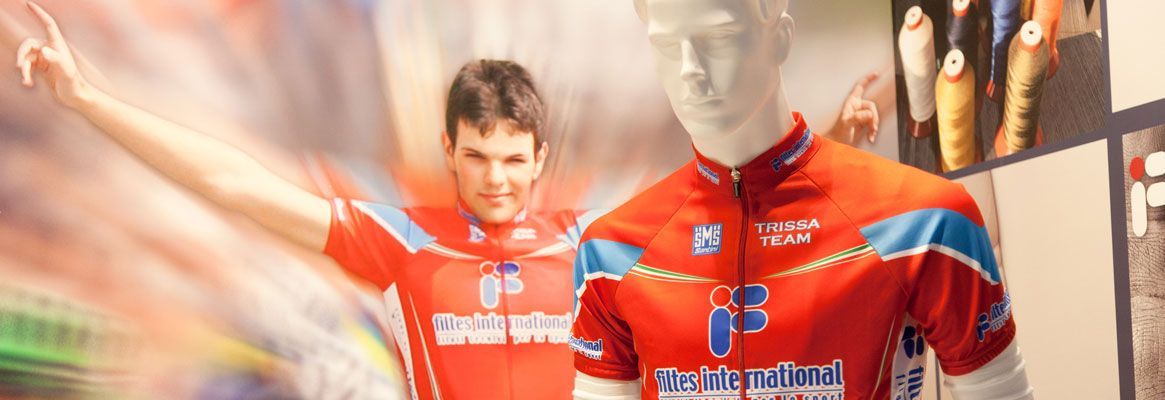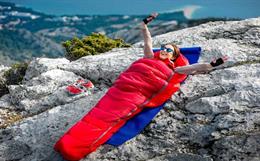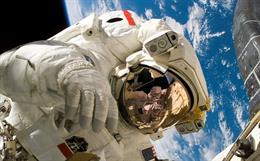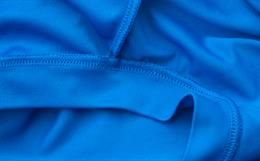Today sports in India have achieved a peak in terms ofpopularity and as a career option. Olympics, Commonwealth Games, Asian Games,SAF Games, Wimbledon and many other world sports tournaments see Indians as oneof the most leading sports participants in the world. From Tendulkar, Paes,Bhupathi, Anand, Geet Sethi, Karthikeyan to Sania Mirza lead the present sports generation of India. Cricket, Hockey, Football, Snooker, weightlifting, Kabaddi,Kho Kho and Archery are the sports of India that have been deep seated into anIndian psyche, whether of a sports person or a sports lover. Not only physicalstrength, power and satisfaction but also a strong alternative of recreation;sports in India have covered a long way towards the road of success and havemade themselves a hallmark in the world of sports
Due to increasing interest and participation in the sportsand leisure activities, the consumption of sports goods and equipment andattendant consumption of textiles in such goods and equipment has shown steadyincrease. Applications of textiles for sports and leisure are extremelydiverse, ranging from sports foot-wear to artificial turfs to parachutefabrics. For sporttech, synthetic fibres and coating have largely replacedtraditional cotton fabrics and other natural fibres.
| S.No | Item | Market Size (Estimated) | Market Potential | ||||
| 2001-02 | 2003-04 | 2007-08 | |||||
| Qty | Value | Qty | Value | Qty | Value | ||
| 1 | Sports Footwear | 570 Mn. Pairs | 5100.00 | 595 Mn. Pairs | 5950.00 | 804 Mn. Pairs | 8040.00 |
| Footwear components(TTC) | 105 Mn Mt | (1020.00) | 120 Mn Mt | (1200.00) | 140 Mn Mt | (1600.00) | |
| 2 | Sports composites (100% TTC) | - | 275 | - | 315 | - | 415 |
| 3 | Sleeping Bags(Camping) (100% TTC) | 25000 nos. | 6.25 | 30000 nos. | 7.50 | 50000 nos. | 12.50 |
| 4 | Artificial Turf (100% TTC) | - | 3.50 | - | 5.04 | - | 10.45 |
| 5 | Balloning Fabics (100% TTC) | - | 0.50 | - | 0.61 | - | 0.89 |
| 6 | Parachute fabrics (100% TTC) | - | 4.50 | - | 6.00 | - | 10.67 |
| | Total(TTC) | | 5389.75 (1309.75) | | 6284.15 (1534.15) | | 8489.51 (2049.51) |
Sports footwear includes appropriate shoes for differentsports. Keeping in view the movement of feet and the type of surface on which asport is played, the shoes uppers and soles are designed to meet the varyingperformance requirements.
Textile components form an integral part of sports andsporty look footwear. In terms of value, approximately 20 percent of thecomponents used in sports shoes are textiles, while the remaining cost iscontributed by non-textile components such as soles, polyurethane, foam leatheron uppers, counters, eyelets etc. Shoe uppers and lining on the counter, socksbelow the shoe uppers are made of textiles and constitute nearly 95 percent ofthe total textiles used in sport shoes. Other textile components, thoughconsumed in minor quantities, are nonwoven textiles, laces, tapes, threads,lables, elastic etc. The shoe uppers and linings used in the inner partcounters and socks are made of laminated fabrics. Nonwoven fabrics are used asinterlinings. The laminated fabrics for shoe uppers may comprise fabriclaminated with foam, polyurethane, rubber etc. In the premium range of shoes,sandwiched meshes may be used instead of fabric-foam laminated uppers.
Three different kinds of fabrics, knitted, woven and non-woven are used for sports shoes. The fibres used for such fabrics are polyester, polyester-viscose, cotton and nylon. Sandwiched mesh also known as high-tech three dimensional fabrics Consisting of micro filaments sandwiched between two layers of meshes is also used as alternative to foam laminated fabrics. Fibres used in these fabrics wick moisture away from the skin to the outer layer of the fabric, thereby facilitating faster evaporation. However, such high performance fabrics are used only in some variants of premium range of sports shoes produced by branded companies. Polyester, polypropylene, nylon and cotton are used for sporttech. However, the predominant use is that of polyester since it is cheap. Nylon is used for the premium range of shoes. Cotton is used predominantly in canvas shoes and childrens shoes.
The Indian sports footwear industry is labour intensive and is concentrated in small and cottage industry sector. Nearly 95 percent of sports footwear is produced in the small / cottage units concentrated in and around Delhi and mere 5 percent in the organized sector.
Sports shoes are available in a wide variety at prices lower than leather footwear. These shoes are comfortable and can be worn for different purposes such as jogging, casual wear, leisure wear etc. The increasing use of sportswear as leisure wear has also been positively impacting the demand of sports shoes. As a result, the sports footwear industry has witnessed a healthy growth of around 10-15 percent per annum during the last decade and has grown to a 595 mn. Pairs of sports shoe market, valued at about Rs.5950 crore. The annual consumption of laminated fabrics by sports footwear industry is about 120 mn. sq. mtrs., and 80 percent of the same is sourced indigenously.
The sports footwear industry is expected to grow by at least 8 percent per annum and accordingly, the demand potential for sports shoes and the attendant requirement of fabrics would be as below:
Market Potential for fabric requirement for sports wear
|
Year |
Sports Shoes |
Requirement of fabric (million meters) |
|
|
Million Pairs |
Value(Rs. Crore) |
||
|
2001-02 |
570 |
5100(1020) |
105 |
|
2003-04 |
595 |
5950(1200) |
120 |
|
2007-08 |
804 |
8040(1600) |
140 |
Note: Figures in brackets indicate approximate value of technical textile shoe component
The picture interpreted from the above table.
Sports Composites:
The Indian sports goods industry manufactures a wide range of sports goods encompassing as much as 318 different items. Textiles are used as raw materials in certain sports items (eg. inflatable balls, cricket protective equipment and boxing equipment etc.) though in extremely small quantities.
Inflatable balls (football, basket ball, volley ball, beach ball, rugby ball etc.) are made of polyester-viscose / polyester / cotton fabric as inner layer and nylon thread which is usually of 9 ply while cotton thread of 5-6 ply are used for stitching.
Protective equipments for cricket comprise leg-guards, batting gloves, wicket keeping gloves, thigh pads, helmets, caps & hats, cricket kit bags etc. Leg-guards are made of PU laminated / PVC coated fabric in front and cotton fabric on the inner side. Batting gloves are made of PU laminated fabric while wicket keeping gloves are made of PVC coated fabric. However, leather is preferred for manufacture of the best quality cricket gloves due to strength and durability required in these gloves. Thigh pads are entirely made of cotton fabrics on outer and inner side whereas cricket kit bags are made entirely of polyester fabrics.
Boxing equipment (boxing gloves, punch bags etc.) is made of PU laminated / PVC coated fabrics, woven polyester fabric, nylon coated with PVC on both sides and canvas.
PU laminated fabric, PVC coated fabric and polyester used for the manufacture of sports composites are imported fabrics. The Indian sports goods industry is highly labour intensive and is largely concentrated in the cottage and small-scale sector.
Indias Major Export destination:
Inflatable balls, protective equipment for cricket and boxing related equipment are mainly exported to U.K., South Africa, Canada, Germany, Italy, Australia, New Zealand, USA and Spain etc.
The demand for sports goods is linked to the frequency of tournaments and sports events, popularity of the particular sport, and purchasing power of the buyers. The demand usually picks up significantly when world-cup tournaments or other regional and national sports tournaments are organized.
Annual Growth Rate:
The market size for selected sports goods using technical textile fabrics is estimated to increase at an annual growth rate of 7 percent and accordingly, the market potential for sports goods (inflatable balls, cricket protective equipment and boxing equipment) is estimated to increase from Rs.315 crore in 2003-04 to Rs.415 crore by 2007-08.
Sleeping Bags:
A sleeping bag may be used in high altitudes with -50OC temperature or in warmer places having temperature in the range of 10OC. Sleeping bags are lightweight and are capable of providing warmth, comfort and protection from wind and water. According to international standards, the maximum permissible total weight of a sleeping bag is around 1.5 kg.
Sleeping bags are constructed with tough yet soft touch nylon taffeta Shells filled either with holofil fibre, down feathers, cotton, or polyfill sheet in mummy shape. These fabrics having characteristics of water-repellency, breathability and in the range of 37-120 GSM are extremely light weight, windproof and have very high tear resistance. Sleeping bags produced using synthetic fibre filling constitutes 80 percent while remaining 20 percent use cotton filling.
The major users of sleeping bags in India:
Military forces and paramilitary forces which account for about 90 percent of the consumption of the total number of sleeping bags produced in India while the other segments comprise corporate sectors, school children going for excursions, mountaineering departments and adventure loving people.
Production Center:
The sleeping bag industry is concentrated in small scale units in the Decentralized sector.
Raw material Imports from,
Nylon taffeta is one of the major raw materials required for producing sleeping bags and its requirement is met entirely through imports from Korea, China, Indonesia, Japan, Sri Lanka, UAE and U.K., etc.
Market Potential:
Accordingly, the market potential for sleeping bags is estimated to increase from 30,000 numbers valued at Rs.7.50 crore in 2003-04 to 50,000 numbers valued at Rs.12.50 crore by 2007-08.
Artificial turf:
Artificial turf or synthetic grass consists of pile fibre and backing fabric fabricated from polyester tyre yarn. The pile fibre is made of either nylon 6 or nylon 6.6 or polypropylene / polyethylene which are then custom extruded into a monofilament ribbon form.
The pile fibres are knitted directly into the backing using flat-bed Raschel knitting machines which are between 4.5 m to 5 m wide to form a mechanically strong and stable structure. The sewing threads which are used high-strength, weather resistant and pigmented to exactly match the color of the turf. The pile fibres are protected by including appropriate organic stabilizers or UV inhibitors and using UV resistant coloring pigments since artificial turfs made of polymeric materials are subject to damage due to exposure to UV radiations present in the sunlight.
Artificial turfs are mostly used in the developed countries for both outdoor fields and portable indoor turf surfaces, including indoor and outdoor arenas, and parks and recreation centers. These synthetic turfs can withstand multi-purpose sports and recreational activities with low maintenance in any kind of weather. However, in India artificial turfs have been used only in hockey pitches.
Artificial turf is not manufactured in India. Imports of artificial turf have been about 84.13 thousand kgs. Valued at Rs.3.44 crore in 2001-02 with sourcing from Holland, Germany, Argentina, etc. There is a huge potential for artificial turf in India. The indigenous production of artificial turf would reduce the cost of artificial turf fields making it affordable for every district in every state and major university campuses to have all-year, all-weather artificial turf pitches. Artificial turf systems produced in India could even be exported to Asian and other countries. Accordingly, the market size of artificial turf is estimated to increase from Rs.5.00 crore in 2003-04 to Rs.10.45 crore in 2007-08.
Balloon fabrics:
Balloons include an envelope or fabric portion of the balloon. Depending on the type of balloon there can be a basket made of resilient wicker and enforced with a mesh of steel wire ropes, horizontal and vertical load tapes to reinforce the balloon, steel wire ropes, and altimeter to indicate the altitude, variometer to show whether it is going up or down, compass, temperature gauge and a range of systems and instruments depending on the type of balloon and functions it has to carry out. Buoyancy of the balloon can be achieved either by hot air or gases like Hydrogen, Helium, Ammonia, and Methane. If the balloon is stationary, it is called aerostat while mobile balloon is termed as airship.
The balloon envelopes are made of special high tenacity fire resistant material called rip-stop nylon 6.6. fabric with tough, durable coatings for heat and air retention. The various performance characteristics needed for hot air balloon fabrics include strength, light-weight, coating, longevity, UV resistance, heat resistance, abrasion resistance and appearance. Besides these critical characteristics, the other qualities required are colour fastness, dye streaks, susceptibility hydrolysis, excessive yarn elongation or stretch, pin-holing or insufficient coatings.
Balloons are used for different applications:
v Advertising
v Sporting and recreational activities
v Transportation
v Meteorological information.
v Surveillance in defense applications, etc.
Balloon fabrics have been developed in India for DRDO (DEFENCE RESEARCH AND DEVELOPMENT ORGANISATION) but volumes are insignificant. The survey has revealed that there is only one fabricator of hot air balloons in India, namely, Bandhu Aerospace Pvt. Ltd., Delhi which uses imported fabric from Du Pont, USA and Carrington, U. K.
In addition to defence requirement of balloon fabric, hot air ballooning is an adventure sport in India. The sport needs training facilities, a plain stretch of land where hot air ballooning can be conducted without any interference, a permanent set up so that adventure loving people can come and take a ride. However, in India such supporting infrastructure is not available. Supporting infrastructure development needs to be initiated by the government so that hot air ballooning could be developed for tourism segment, and for adventure seekers. Amusement parks have pretty big space and adventure cells should be developed in such parks for teaching aerial sports like this. The growth in hot air ballooning fabrics is estimated to be moderate from Rs.0.61 crore in 2003-04 to Rs. 0.89 crore in 2007-08.
Parachute canopy fabrics and accessories:
Parachutes are used for aerial delivery of men, materials/cargo, heavy equipment, vehicles etc. Besides, they are widely used as air decelerators for arresting the high speed of fighter aircrafts during landing to reduce wear and tear of the braking mechanism of the aircrafts. Parachutes are also used for accurate bomb dropping, controlled decent of flares etc.
Technical textiles comprise more than 95 percent of most of the parachute systems in the form of canopy fabric, harness, webbing, tapes, rigging lines, sewing, etc. Unlike other conventional applications, fabrics used for canopy of parachutes are essentially required to satisfy certain functional requirements which are of secondary importance in the case of usages like apparel, furnishing, industrial etc. For a fabric to be used as parachute canopy, it has to possess all the basic qualities of a good cloth and in addition, it must behave like an engineering material governed by rigid tolerances in respect of certain parameters which may or may not be important for normal applications. The basic properties of canopy fabric constituting 80 percent of the parachutes, which are most significant to the performance and design of parachutes, are strength, weight and air porosity. These properties are closely inter-related, the change in any of these properties would throw the others out of balance.
Parachute Canopy fabrics and other technical textile accessories are required for following types of parachutes:
v Man carrying parachutes for para troops
v Air crew parachutes
v Heavy dropping parachute systems for dropping vehicles, guns etc.
v Cargo parachute system for supply dropping
v Flare parachutes
v Parachutes for bomb dropping
v Para gliding
v Steerable parachutes
v High altitude parachutes
v Sports parachutes.
Parachute canopy fabrics are woven from high tensile nylon multifilament in the denier range of 32 to 200 deniers. Cargo parachutes are generally made from cotton fabrics of specific strength. Harness, webbing, tapes etc. are made from high tensile nylon yarn of denier range 210 to 840 denier. Major consumer of parachutes is Defence Forces. Besides, sports parachutes and para gliding are used in Civil Sector, which is gaining popularity slowly.It is estimated that Defence requirement for parachute fabrics was Rs. 6 crore during 2003-04 which is expected to increase to Rs.10.67 crore by 2007-08.
This article focused Indian textile industries opportunity in domestic and global market. It clearly indicates there is insufficient supply of raw material and finished products. When the textile industry overcomes the opportunity and the strength then there will be a chance to rule the technical textile industry.
Reference: www.texmin.com
To read more articles on Textile, Industry, Technical Textile, Dyes & Chemicals, Machinery, Fashion, Apparel, Technology, Retail, Leather, Footwear & Jewellery, Software and General please visit http://articles.fibre2fashion.com
To promote your company, product and services via promotional article, follow
this link: http://www.fibre2fashion.com/services/article-writing-service/content-promotion-services.asp




_Small.jpg)



